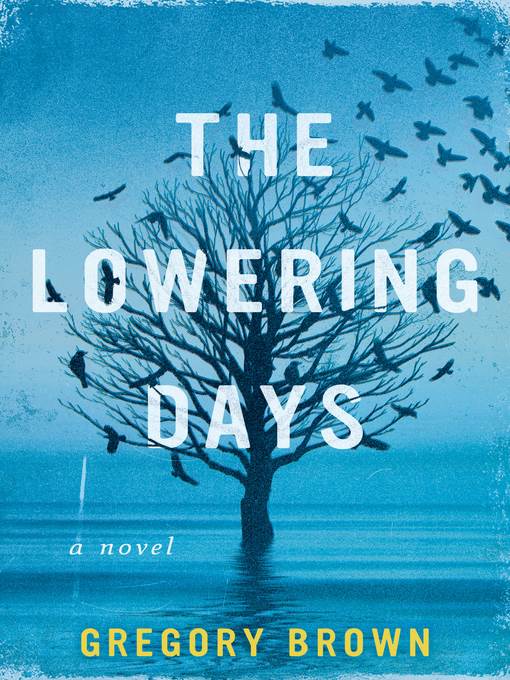
The Lowering Days
A Novel
کتاب های مرتبط
- اطلاعات
- نقد و بررسی
- دیدگاه کاربران
نقد و بررسی

January 4, 2021
Brown’s dynamic debut shines a light on a small town’s fraught history in Maine’s Penobscot River valley. The story is narrated by David Ames, a doctor reflecting on his childhood in the 1980s and ’90s, beginning with his journalist mother, Falon’s establishment of a local newspaper called The Lowering Days during his infancy. As the paper’s first articles go to press, the Indigenous Penobscot people are working to reclaim land they allege was illegitimately sold out from under them in the 19th century. A paper mill now sits on the land—and in the crosshairs of a national clean water movement. After a fire destroys the mill, Falon publishes a letter by a teen eco-activist who claims to have set the fire, and controversy erupts. The white townspeople become increasingly divided on the issues of pollution and land reparations, as rumors and long-held prejudices build to various feuds, particularly between Falon and a troublemaking lobsterman Lyman Creel, whose family owned the mill. The feud with Creel leads to a tragedy that forces David and his family to regroup. Brown poetically depicts the bucolic backdrop and grounds the action amid forested hillsides “deep and green and smoky with the scent of pine.” Lyrical and gorgeously written, Brown’s memorable outing does justice to a complicated web of issues. Agent: Jonah Straus, Jonah Straus Literary.

January 15, 2021
A novel of place, myth, and clashing loyalties set in 1980s Penobscot, Maine. Shortly after a team of Japanese investors visits a local paper mill with an eye toward reopening it, a 14-year-old member of the Penobscot Nation burns the building to the ground and disappears. The act sows discord through the economically challenged region. Enraged by the loss of prospective jobs, some demand swift vengeance for the perpetrator. Others, like the narrator's mother, Falon Ames, who runs a local newspaper, argue that the event must be seen in its larger context; the mill, after all, had hardly been "an innocent victim"; its former owners had "knowingly discharged toxic chemicals and wastewater products...into the river, poisoning its fish and plants." This dichotomy--between a mystical appreciation for the natural world and the environmentally extractive nature of work and industry--pervades Brown's beautiful if uneven debut. While the arsonist and her father struggle to survive off the land as fugitives, Penobscot Bay lobsterman Lyman Creel inaugurates a parallel land-industry drama: Convinced that un-fished waters are wasted waters, Lyman lays his traps in the mouth of the Penobscot River, an act of overreach (the river rights belong to the Penobscot Nation) that helps motivate the narrator and his twin brother to begin sabotaging Lyman's traps. Like many debuts, Brown's first novel is imperfect. His dialogue sometimes veers toward preciousness at the expense of character development; his characters are often too accurately aware of the wider themes that shape their lives ("Some places are like portals to eternity," says the narrator's uncle. "You stand in them and look around, and you feel how long and unending the world is. You become a part of something beyond time. Maybe this is one of those places"); and the plot moves through increasingly convenient contortions as it hurtles toward its foreseeable crescendo. Yet despite these shortcomings, Brown tells a gripping tale. And in his hands the Penobscot region of the 1980s and '90s--with its eccentric cast of Vietnam veterans, hippy fugitives, gruff lobstermen, and Penobscot tribal members--comes wonderfully to life. Mystical, gripping, rooted in the land--Brown may bang a little too hard on the keys, but he plays a compelling tune.
COPYRIGHT(2021) Kirkus Reviews, ALL RIGHTS RESERVED.

February 1, 2021
Brown's debut novel weaves together the lush setting of the Penobscot River in Maine and disparate characters struggling to coexist on a verdant, alluring land. The protagonist, David, a white man, transports readers to his childhood home, a place that "shares its name with the Penobscot people . . . the original inhabitants of the river and ancestors of the waters." At a time when lawsuits called for "two-thirds of the land in the state of Maine to be returned to the tribes, along with massive financial reparations," David's activist mother, Falon, attempts to bridge cultural divides by launching a local paper she names The Lowering Days. Ironically, even the medium on which this news is conveyed, paper, symbolizes environmental exploitation, and when an arsonist burns a nearby bankrupt paper mill, conflicts escalate, opening deep wounds. As "old hurts and wayward entitlements raged on, generation to generation, feeding sadness and violence," David and his family find love and survive tragedy, while profound truths, the mournful beauty of the land, and mythologies encoded within the people who live there are revealed.
COPYRIGHT(2021) Booklist, ALL RIGHTS RESERVED.

























دیدگاه کاربران